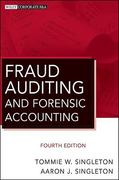Question
35.a. What is the main rule that applies to offer and acceptance when the parties communicate by telephone: A) the offeror is bound upon receipt
35.a. What is the main rule that applies to offer and acceptance when the parties communicate by telephone:
A) the offeror is bound upon receipt of the offer by the recipient of the offer.
B) the Offeror cannot communicate a serious offer over the telephone.
C) the offeror is bound as soon as the offer is communicated by telephone.
D) The Offeror will not be bound until it receives the acceptance.
E) Offeror can only be bound at the time of mailing of acceptance.
35.b. A residential lease of at least one year concluded orally is enforceable and binds the parties:
A) true, the lease of at least one year is a consumer contract that can be concluded orally.
B) False, the lease of at least one year must absolutely be concluded in writing under penalty of nullity.
C) true, like all contracts, a lease of at least one year can be concluded orally.
D) true, the lease of at least one year is a standard contract which is binding on the parties.
E) False, the lease of at least one year is a pre-executed consideration which cannot be imposed on the parties.
35.c. Why is gratitude not a valid consideration for making a promise enforceable?
A) Because everything that is free is really free. Period!
B) Because, in general, in the free act, the market element is non-existent, ie nothing is demanded in return.
C) Because gratuity is not in itself a legal act.
D) Because the consideration is an act without legal effect.
E) Because it would be contrary to the principles of natural justice to demand anything from someone who wants to be generous.
35.d. What must a defamation plaintiff prove to be successful?
A) It must prove that the defendant acted deliberately in making the information available to third parties.
B) He must prove that the defamatory remarks have harmed him.
C) He must prove that the defamatory comments are a breach of the defendant's duty to act diligently. The defendant was thus negligent.
D) Answers A and B.
E) All of the above.
Step by Step Solution
There are 3 Steps involved in it
Step: 1

Get Instant Access to Expert-Tailored Solutions
See step-by-step solutions with expert insights and AI powered tools for academic success
Step: 2

Step: 3

Ace Your Homework with AI
Get the answers you need in no time with our AI-driven, step-by-step assistance
Get Started


